#orion splashdown
Explore tagged Tumblr posts
Text
I love a lot of things about my job but I think my favorite by far is how my coworkers blow up our team group chat with chatter and excitement about current goings on at NASA. New JWST images. New research released. We screamed and cried and keysmashed during the Artemis 1 launch.
Currently? Orion capsule splashdown.
There's just something special about having a group of people in brickspace that you can geek out with over this kind of stuff.
#nasa#orion capsule#orion splashdown#artemis 1#artemis program#artemis mission#fox thoughts#science outreach#steam outreach
42 notes
·
View notes
Text
The Artemis I Mission: To the Moon and Back
The Artemis I mission was the first integrated test of the Orion spacecraft, the Space Launch System (SLS) rocket, and Exploration Ground Systems at NASA’s Kennedy Space Center in Florida. We’ll use these deep space exploration systems on future Artemis missions to send astronauts to the Moon and prepare for our next giant leap: sending the first humans to Mars.
Take a visual journey through the mission, starting from launch, to lunar orbit, to splashdown.
Liftoff

The SLS rocket carrying the Orion spacecraft launched on Nov. 16, 2022, from Launch Complex 39B at NASA’s Kennedy Space Center in Florida. The world’s most powerful rocket performed with precision, meeting or exceeding all expectations during its debut launch on Artemis I.
"This is Your Moment"

Following the successful launch of Artemis I, Launch Director Charlie Blackwell-Thompson congratulates the launch team.
“The harder the climb, the better the view,” she said. “We showed the space coast tonight what a beautiful view it is.”
That's Us

On Orion’s first day of flight, a camera on the tip of one of Orion’s solar arrays captured this image of Earth.
Inside Orion

On the third day of the mission, Artemis I engineers activated the Callisto payload, a technology demonstration developed by Lockheed Martin, Amazon, and Cisco that tested a digital voice assistant and video conferencing capabilities in a deep space environment. In the image, Commander Moonikin Campos occupies the commander’s seat inside the spacecraft. The Moonikin is wearing an Orion Crew Survival System suit, the same spacesuit that Artemis astronauts will use during launch, entry, and other dynamic phases of their missions. Campos is also equipped with sensors that recorded acceleration and vibration data throughout the mission that will help NASA protect astronauts during Artemis II. The Moonikin was one of three “passengers” that flew aboard Orion. Two female-bodied model human torsos, called phantoms, were aboard. Zohar and Helga, named by the Israel Space Agency (ISA) and the German Aerospace Center (DLR) respectively, supported the Matroshka AstroRad Radiation Experiment (MARE), an experiment to provide data on radiation levels during lunar missions. Snoopy, wearing a mock orange spacesuit, also can be seen floating in the background. The character served as the zero-gravity indicator during the mission, providing a visual signifier that Orion is in space.
Far Side of the Moon
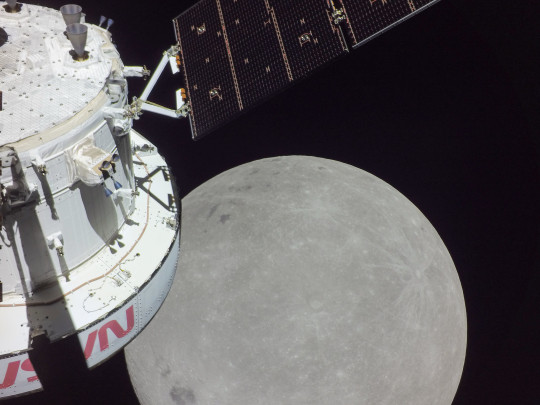
A portion of the far side of the Moon looms large in this image taken by a camera on the tip of one of Orion’s solar arrays on the sixth day of the mission.
First Close Approach

The Orion spacecraft captured some of the closest photos of the Moon from a spacecraft built for humans since the Apollo era — about 80 miles (128 km) above the lunar surface. This photo was taken using Orion’s optical navigational system, which captures black-and-white images of the Earth and Moon in different phases and distances.
Distant Retrograde Orbit
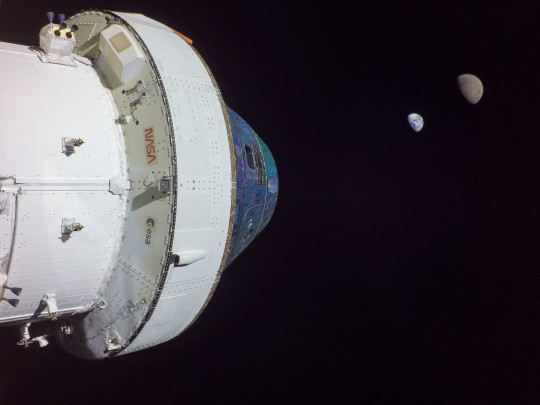
Orion entered a distant retrograde orbit around the Moon almost two weeks into the mission. The orbit is “distant” in the sense that it’s at a high altitude approximately 50,000 miles (80,467 km) from the surface of the Moon. Orion broke the record for farthest distance of a spacecraft designed to carry humans to deep space and safely return them to Earth, reaching a maximum distance of 268,563 miles (432,210 km).
Second Close Approach

On the 20th day of the mission, the spacecraft made its second and final close approach to the Moon flying 79.2 miles (127.5 km) above the lunar surface to harness the Moon’s gravity and accelerate for the journey back to Earth.
Cameras mounted on the crew module of the Orion spacecraft captured these views of the Moon’s surface before its return powered flyby burn.
Heading Home

After passing behind the far side of the Moon on Flight Day 20, Orion powered a flyby burn that lasted approximately 3 minutes and 27 seconds to head home. Shortly after the burn was complete, the Orion spacecraft captured these views of the Moon and Earth, which appears as a distant crescent.
Parachutes Deployed
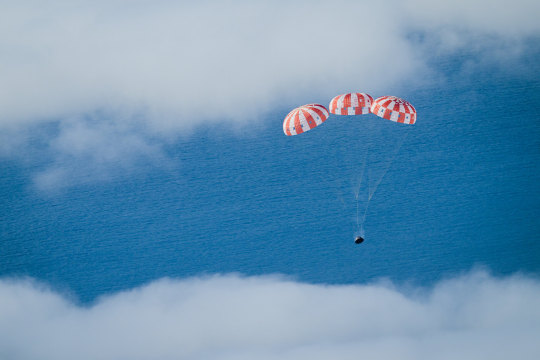
Prior to entering the Earth’s atmosphere, Orion’s crew module separated from its service module, which is the propulsive powerhouse provided by ESA (European Space Agency). During re-entry, Orion endured temperatures about half as hot as the surface of the Sun at about 5,000 degrees Fahrenheit (2,760 degrees Celsius). Within about 20 minutes, Orion slowed from nearly 25,000 mph (40,236 kph) to about 20 mph (32 kph) for its parachute-assisted splashdown.
Splashdown

On Dec. 11, the Orion spacecraft splashed down in the Pacific Ocean off the coast of California after traveling 1.4 million miles (2.3 million km) over a total of 25.5 days in space. Teams are in the process of returning Orion to Kennedy Space Center in Florida. Once at Kennedy, teams will open the hatch and unload several payloads, including Commander Moonikin Campos, the space biology experiments, Snoopy, and the official flight kit. Next, the capsule and its heat shield will undergo testing and analysis over the course of several months.
Make sure to follow us on Tumblr for your regular dose of space!
#Artemis#LunarMission#SpaceLaunchSystem#Rocket#Space#MegaMoonRocket#Moon#Spacecraft#Orion#NASAMoonSnap#Moonikin#Earth#LunarOrbit#Splashdown#Launch
2K notes
·
View notes
Text

#IFTTT#Flickr#nasa#marshallspaceflightcenter#msfc#rocket#space#artemis#spacelaunchsystem#moon2mars#rocketengine#moon#orion#deepspace#splashdown#recovery#nasarecoveryteam#melissajones#navy#nasarecoverydirector#artemisiresourcereel#ksc
33 notes
·
View notes
Photo

Orion Splashdown by NASA Johnson https://flic.kr/p/2o5kF7e
128 notes
·
View notes
Text
Splashdown 101: Joint Team to Recover Crew Orion After Moon Missions
When Artemis II NASA astronauts Reid Wiseman, Victor Glover, Christina Koch, and CSA (Canadian Space Agency) astronaut Jeremy Hansen return to Earth after a nearly 10-day mission around the Moon, a joint NASA and Department of Defense team led by NASA’s Exploration Ground Systems Program will be ready to retrieve them from the Orion spacecraft […] from NASA https://ift.tt/WPJ7rAO
1 note
·
View note
Photo

2023 December 7
Orion and the Ocean of Storms Image Credit: NASA, Artemis 1
Explanation: On December 5, 2022, a camera on board the uncrewed Orion spacecraft captured this view as Orion approached its return powered flyby of the Moon. Beyond one of Orion's extended solar arrays lies dark, smooth, terrain along the western edge of the Oceanus Procellarum. Prominent on the lunar nearside Oceanus Procellarum, the Ocean of Storms, is the largest of the Moon's lava-flooded maria. The lunar terminator, shadow line between lunar night and day, runs along the left of this frame. The 41 kilometer diameter crater Marius is top center, with ray crater Kepler peeking in at the edge, just right of the solar array wing. Kepler's bright rays extend to the north and west, reaching the dark-floored Marius. On December 11, 2022 the Orion spacecraft reached its home world. The historic Artemis 1 mission ended with Orion's successful splashdown in planet Earth's water-flooded Pacific Ocean.
∞ Source: apod.nasa.gov/apod/ap231207.html
132 notes
·
View notes
Text

Artemis II astronauts put Orion's side hatch to the test
Artemis II NASA astronauts Victor Glover, Christina Koch, and Reid Wiseman, and CSA (Canadian Space Agency) astronaut Jeremy Hansen recently traveled to Lockheed Martin Space in Littleton, Colorado, where they practiced opening and closing an Orion crew module side hatch model to help demonstrate its reliability and durability during their 10-day mission around the moon.
During normal mission operations, the crew will not operate the hatches—the ground systems team at NASA's Kennedy Space Center in Florida will assist the crew into Orion at the launch pad, then close the hatch behind them prior to liftoff. After splashdown in the Pacific Ocean, recovery teams will open the side hatch and help crew to exit.
Back-up crew members Andre Douglas of NASA and Jenni Gibbons of CSA also trained on hatch operations, which help ensure the crew can safely enter and exit the spacecraft in the event of an emergency. The side hatch is normally opened using a manual gearbox system, but in an emergency, the hatch has release mechanisms containing small pyrotechnic (explosive) devices that release the latch pins on the hatch instantaneously, allowing the hatch to open quickly.
Under NASA's Artemis campaign, the agency will establish the foundation for long-term scientific exploration at the moon, land the first woman, first person of color, and its first international partner astronaut on the lunar surface, and prepare for human expeditions to Mars for the benefit of all.
IMAGE: Astronaut and Artemis II pilot Victor Glover maneuvers the latch handle on an Orion test side hatch during performance evaluations at the Lockheed Martin Space campus in Littleton, Colorado. Credit: Lockheed Martin
4 notes
·
View notes
Link
52 notes
·
View notes
Text

On the 20th day of the Artemis I mission, Orion captured the Earth rising behind the Moon following the return powered flyby. The 3 minute, 27 second, return powered flyby burn, committed the spacecraft to a Dec. 11 splashdown in the Pacific Ocean.
Source
15 notes
·
View notes
Text




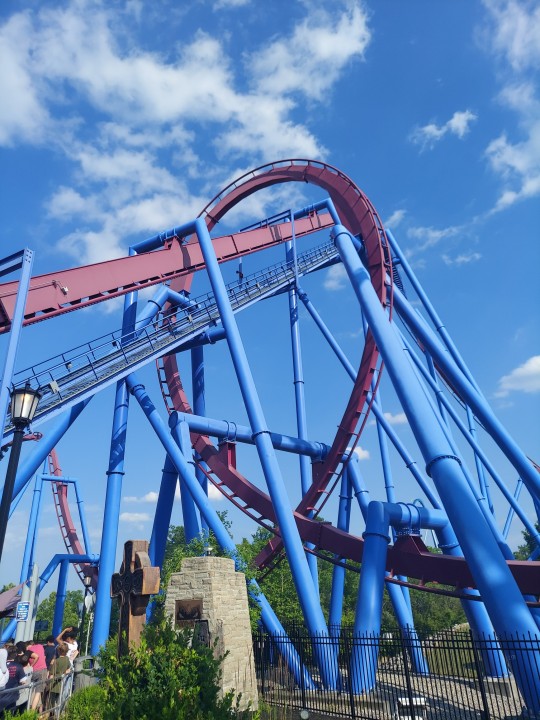

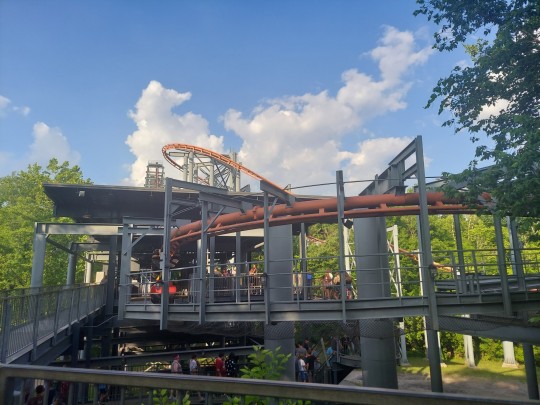

Kings Island trip report!!!!! June 2023.
Kings Island was as great as I had hoped. I had been wanting to go here so badly for so long, and it exceeded expectations. Beautiful park, great operations, great rides. Loved it. Now let's talk coasters.
1) Mystic Timbers -- 5 rides -- This has been one of my most anticipated coasters for a long time, because of how insanely fast it looks in POVs, and I was not disappointed. It absolutely feels as fast as it looks -- the pacing is excellent, the transitions are quick, and the airtime never stops. The twisting drop is fun, and every hill delivers with the negative Gs, from the larger hills to the smaller banked hills. However, the out-and-back layout causes Mystic Timbers to lack the twists/turns that make Thunderhead feel so out of control for me. As a result, while I love both rides, Thunderhead remains my favorite GCI by a small margin.
2) The Beast -- 4 rides, including 1 night ride -- The Beast may be one of the most iconic roller coasters in history, but it is still ridiculously underrated among enthusiasts. Because of that, I went into this ride with low expectations. And boy oh boy, was I blown away. The first drop into the tunnel rocks. The setting deep in the woods is incredible. The ride feels like it is never going to end. The finale after the second lift hill is, of course, the highlight. The unnatural banking on that shallow drop is a crazy sensation on its own. And then, the love of my life, the double helix in the tunnels!!!!!!!!! The continuously increasing speed plus the LATERALS plus the tunnel wall being right beside my head on the left side of the train!!! All of this is crazy enough during the day, but at night, deep in the woods where you cannot see what is coming next??? WTF????? I waited over an hour and a half for my night ride, and my god, for the way I was losing my mind during that ride, it was sooooo worth it. A large part of me wants to put The Beast above Mystic Timbers. It's impossible to choose.
3) Diamondback -- 4 rides -- This is one of my favorite B&M hypers, right up there with Goliath. It's hard to choose between Diamondback and Goliath, as they are both great for different reasons. The airtime on Diamondback is unlike any of the other B&M hypers I've ridden. Diamondback may not (key word here is may) have a hill that outdoes the first hill on Mako in terms of one singular moment of sustained floater, but cumulatively, Diamondback has way more airtime than Mako. Even in row 7 (the closest to the front that I rode), the airtime hits. But in the back row??? I managed to be the least stapled I've ever been with this type of restraint, and I thought I was going to die on the first two camelbacks because of how sustained (and relatively powerful) the floater air is. Even the drop off the midcourse and the small hills after the midcourse give good airtime. And I love the splashdown on this ride, not only because it looks cool, but because you can actually get wet in the back row if you try.
4) Orion -- 4 rides -- This ride is extremely underrated. I think people who act as if there is some kind of night and day difference between Orion and Fury are insane. The height and the sense of speed alone are amazing, but Orion also has a great mix of forces. The first drop is excellent and basically indistinguishable from Fury's first drop, giving great airtime all the way down. The positive Gs at the bottom of the first drop are awesome. The inward banked hill after the drop does nothing, so that's one legitimate complaint. The speed hill after the turnaround and the camelback that follows are the standout elements. The speed hill gives borderline ejector airtime, while the camelback gives great floater. I also like that this ride has a helix to add some more positives into the mix. The helix is not as intense as I would have hoped, but it was still good. (Maybe I'm just spoiled by the beautifully sustained positives of Goliath's 540 degree helix.) Overall, just a great ride.
5) Banshee -- 1 ride -- I really needed to ride this more than once to get a good feel for it, but I just didn't have time, and honestly, I didn't really want to because of the restraints. I try not to let little things ruin my opinion of a ride, but I cannot get past those vest restraints on some B&Ms. Anyway, I liked this ride. The drop is huge, and there are no midcourse brakes, so this ride has breakneck pacing and crushing positive Gs, which I love. However, the inversions are more gracefully profiled with far less whip than the other inverts I have ridden. I found the slow inline twist at the end to be particularly out of character. The snappy inversions are the main reason why I have loved every other invert I've done, and because Banshee falls short in that regard, it ranks as my least favorite invert. (Also of note, this ride rattles hard for its young age. I personally don't mind that, but thought it was worth mentioning.)
6) Invertigo -- 1 ride -- This inverted boomerang is so much better than a traditional boomerang. It is incredibly forceful and didn't really bang my head at all.
7) The Bat -- 1 ride -- This is a completely different ride than the only other Arrow suspended coaster I've done, Iron Dragon. The Bat has a great sense of speed, as it is continuously descending throughout the ride. The setting in the woods is nice, and the swinging is crazy in parts, particularly coming into the final brakes.
8) Racer -- 1 ride -- I love my woodies, but these old PTCs just aren't the intense ride experience that I need. This one actually did give a little bit of airtime on some of the hills, and it is very smooth since the recent track work. Just a nice, fun ride.
9) Adventure Express -- 1 ride -- This is one of the better mine trains I've done, but it's still a mine train.
I didn't ride Flight of Fear or Backlot Stunt Coaster, as I have already ridden their clones at Kings Dominion and wanted to spend my time on re-rides on the top 4. But they would rank at #9 and #10 respectively, following Racer.
#kings island#roller coasters#mystic timbers#the beast#diamondback#orion#banshee#invertigo#the bat#racer#adventure express#amusement park adventures#personal#photography
6 notes
·
View notes
Text

Moonbound: One Year Since Artemis I
On this day last year, the Artemis I rocket and spacecraft lit up the sky and embarked on the revolutionary mission to the Moon and back. The first integrated flight test of the rocket and spacecraft continued for 25.5 days, validating NASA’s deep exploration systems and setting the stage for humanity’s return to the lunar surface.
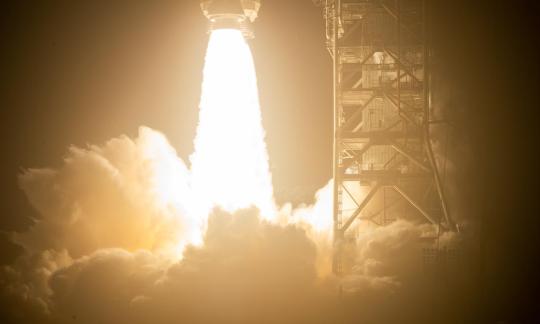
On Nov. 16, 2022, the Space Launch System (SLS) rocket met or exceeded all expectations during its debut launch on Artemis I. The twin solid rocket booster motors responsible for producing more than 7 million pounds of thrust at liftoff reached their performance target, helping SLS and the Orion spacecraft reach a speed of about 4,000 mph in just over two minutes before the boosters separated.
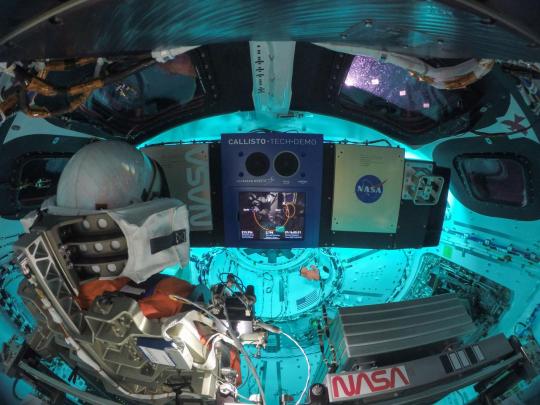
Quite a few payloads caught a ride aboard the Orion spacecraft on the Artemis I mission: In addition to a number of small scientific satellites called CubeSats, a manikin named Commander Moonikin Campos sat in the commander’s seat. A Snoopy doll served as a zero-gravity indicator — something that floats inside the spacecraft to demonstrate microgravity.
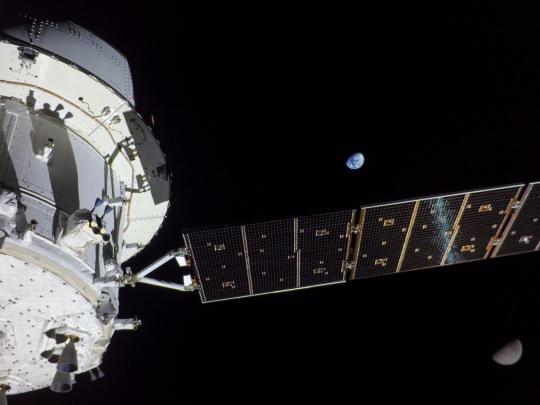
During the mission, Orion performed two lunar flybys, coming within 80 miles of the lunar surface. At its farthest distance during the mission, Orion traveled nearly 270,000 miles from our home planet, more than 1,000 times farther than where the International Space Station orbits Earth. This surpassed the record for distance traveled by a spacecraft designed to carry humans, previously set during Apollo 13.
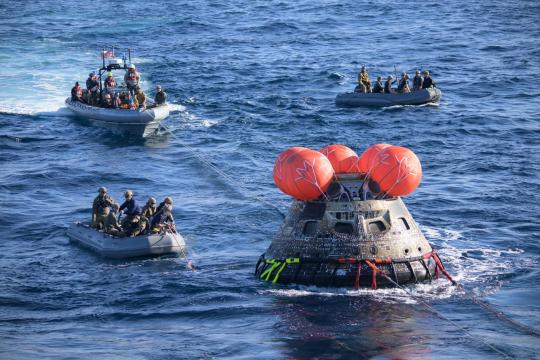
The Orion spacecraft arrived back home to planet Earth on Dec. 11, 2022. During re-entry, Orion endured temperatures about half as hot as the surface of the Sun at about 5,000 degrees Fahrenheit. Within about 20 minutes, Orion slowed from nearly 25,000 mph to about 20 mph for its parachute-assisted splashdown.
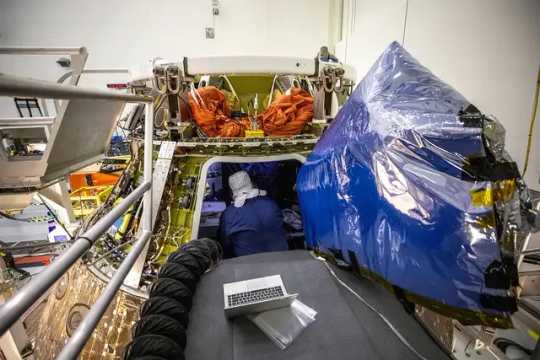
Recovery teams successfully retrieved the spacecraft and delivered it back to NASA’s Kennedy Space Center for de-servicing operations, which included removing the payloads (like Snoopy and Commander Moonikin Campos) and analyzing the heat shield.
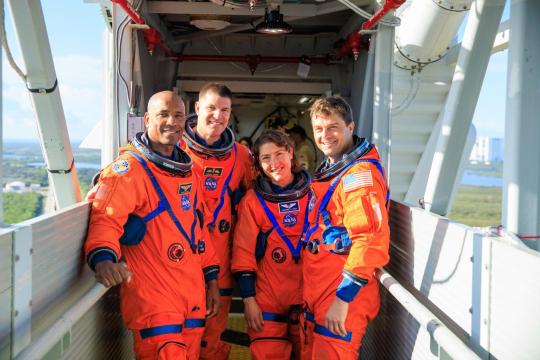
With the Artemis I mission under our belt, we look ahead to Artemis II — our first crewed mission to the Moon in over 50 years. Four astronauts will fly around the Moon inside Orion, practicing piloting the spacecraft and validating the spacecraft’s life support systems. The Artemis II crew includes: NASA astronauts Reid Wiseman, Victor Glover, and Christina Koch, and CSA astronaut Jeremy Hansen.
youtube
As we look ahead to Artemis II, we build upon the incredible success of the Artemis I mission and recognize the hard work and achievements of the entire Artemis team. Go Artemis!
Make sure to follow us on Tumblr for your regular dose of space!
#Artemis#Rocket#Anniversary#Launch#NASA#Space#Moon#Lunar#Astronaut#Apollo#Orion#Spacecraft#Space Launch System#STEM#science#tech#technology#on this day#Youtube
2K notes
·
View notes
Photo
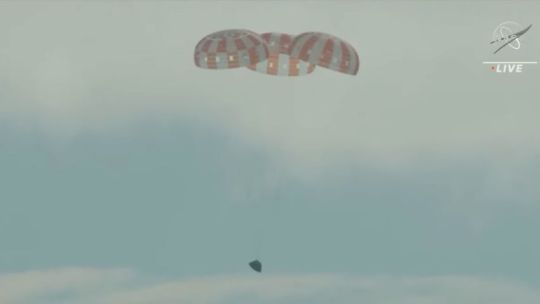
NASA's Artemis moon mission ends with splashdown | CNN
The Artemis I mission — a 25½-day uncrewed test flight around the moon meant to pave the way for future astronaut missions — came to a momentous end as NASA’s Orion spacecraft made a successful ocean splashdown Sunday.
The spacecraft finished the final stretch of its journey, closing in on the thick inner layer of Earth’s atmosphere after traversing 239,000 miles (385,000 kilometers) between the moon and Earth. It splashed down at 12:40 p.m. ET Sunday in the Pacific Ocean off Mexico’s Baja California.
This final step was among the most important and dangerous legs of the mission.
But after splashing down, Rob Navias, the NASA commentator who led Sunday’s broadcast, called the reentry process “textbook.”
“I’m overwhelmed,” NASA Administrator Bill Nelson said Sunday. “This is an extraordinary day.”
The capsule is now bobbing in the Pacific Ocean, where it will remain until nearly 3 p.m. ET as NASA collects additional data and runs through some tests. That process, much like the rest of the mission, aims to ensure the Orion spacecraft is ready to fly astronauts. ...
16 notes
·
View notes
Text
SPLASHDOWN! NASA’s Orion Returns to Earth After Historic Moon Mission
The uncrewed Orion capsule splashed down in the Pacific Ocean at 9:40 a.m. PST on Sunday, Dec. 11, after a 25.5 day mission to the Moon.
During the mission, Orion performed two lunar flybys, coming within 80 miles of the lunar surface. At its farthest distance during the mission, Orion traveled nearly 270,000 miles from Earth, farther than any other spacecraft built for humans, to intentionally stress systems before flying crew, to make it as safe as possible.
Credit: NASA
7 notes
·
View notes
Text
Splashdown! NASA’s Orion Returns to Earth After Historic Moon Mission
NASA’s Orion spacecraft splashed down in the Pacific Ocean, west of Baja California, at 9:39 a.m. PST Sunday after a record-breaking mission, traveling more than 1.4 million miles on a path around the Moon and returning safely to Earth, completing the Artemis I flight test. from NASA https://ift.tt/dj3IP5R
0 notes
Photo

2022 December 8
Orion and the Ocean of Storms Image Credit: NASA, Artemis 1
Explanation: A camera on board the uncrewed Orion spacecraft captured this view on December 5 as Orion approached its return powered flyby of the Moon. Below one of Orion's extended solar arrays lies dark, smooth, terrain along the western edge of the Oceanus Procellarum. Prominent on the lunar nearside Oceanus Procellarum, the Ocean of Storms, is the largest of the Moon's lava-flooded maria. The lunar terminator, shadow line between lunar night and day, runs along the left of the frame. The 41 kilometer diameter crater Marius is top center, with ray crater Kepler peeking in at the edge, just right of the solar array wing. Kepler's bright rays extend to the north and west, reaching the dark-floored Marius. Of course the Orion spacecraft is now headed toward a December 11 splashdown in planet Earth's water-flooded Pacific Ocean.
∞ Source: apod.nasa.gov/apod/ap221208.html
101 notes
·
View notes
Link
Egy szűk óra s végrehajtanak egy olyan légkörbe-belépést, amit még senki sem csinált. Ahogy látom, 25.000km/h sebességgel érkezik, nagyon merőlegesen fog belépni a légkörbe, s az egyre sűrűsödő légkör egyrészt lefékezi, másrészt a hőpajzsot 4-5000 fokra hevíti. Aztán megfordul, engedi magát visszapattintani az űrba, majd laposabb szögben, de már lassabban megtörténik a tényleges belépés. (Legalábbis, ha jól értelmeztem)
9 notes
·
View notes